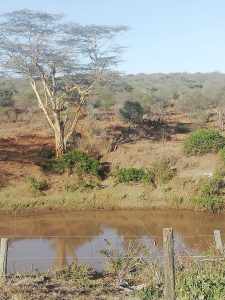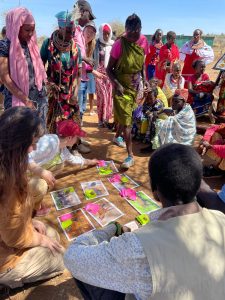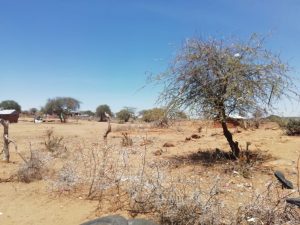There are things you cannot truly learn by just reading about them. You can get acquainted with the concept, but if you want an in-depth understanding of it, you need to get rid of the distance and the intermediate messengers and go observe directly with your own eyes. As a biologist, I’ve acquired most of my scientific knowledge by studying. Now I’m studying a MSc degree in Ecology and Evolutionary Biology at the University of Helsinki, where I’m doing very variated courses that allow me to learn both about the underlying ecological and evolutionary processes that shape nature as we know it, as well as the current climate and biodiversity crisis and what can we do to stop it. I’m now getting more and more interested in the branch of conservation and applied science, which involves a human and social dimension. The required degree of empathy and comprehension in this area is hard to get if you are distanced from the environment and situation.
I recently had one of the most insightful experiences of my life. With the help of the HiLIFE conference grant, I went to Kenya for two weeks to take part in a course about human-wildlife conflict (HWC) in East Africa, which is part of my MSc programme and was organized by one of my teachers, Mar Cabeza. Before leaving, I had to prepare a brief presentation about one of the most conflictive species in the area: the African elephant. I talked to my mom about this presentation, and she was honestly surprised: “How can such a kind, smart and nice grass-eating animal be the source of conflict?”. My mom loves elephants, it would be a dream for her to see one in the wild. I love them too, of course, and I know they are essential for their ecosystem, aside from being beautiful. I could observe them in Kenya and it was a magical moment that I will never forget. But what I will also never forget is what we heard when we asked local people about them. “I like all animals, but I’m terrified of elephants”, a girl said.

The views from our campsite. On the other side of the fence, we could see giraffes and elephants
As a key part of the course, we organised focus groups and interviews with local people to hear about the HWC first-hand. This girl had some scary experiences with aggressive elephants that she couldn’t just forget about. Even though we had seen electric fences targeted at elephants all over the region, they are strong and smart animals, and they keep finding ways to trespass them. The risk of having a face-to-face with an elephant is high enough to have the population concerned. And this is not even the major source of conflict with elephants. These animals cause huge losses by crop raiding and infrastructure destruction, especially water structures like dwells. Droughts like the current one in Laikipia force animals to search for water and food in human settlements, so these incidents become more frequent. In communities with a subsistence economy, this is a serious threat to the population. Situations like this one increase tensions between the people and the wildlife and are counterproductive for conservation.

Some colleagues (and me, bottom-left) and local people participating in one of the activities during the focus group
At the same time, elephants might not be very happy about some human activities, I thought. Elephants migrate long distances, so when they find an obstacle impeding this movement, it’s logical to think they will try to overcome it. They can’t just decide to stop a behaviour shaped by evolution over thousands of years just because lately humans are building and expanding more than before. In Laikipia, several landowners have built elephant fences around their huge properties, often the elephants being more of an excuse than the actual reasons. Conflicts between different stakeholders (including farmers, nomad shepherds, ranch owners and private conservancies, among others) over the uses of and rights over the territory play a big role in determining the placement and extension of the fences. Consequently, the design of this alleged solution to HWC attends very little to what is actually needed, and, predictably, it fails to prevent any conflict. This doesn’t mean that elephant fences are useless. Maybe the small village we visited would be a safer place if it was surrounded by an elephant fence. Unfortunately, effective solutions are not usually that easy to implement.

The landscape at the community we visited in Laikipia
It is very easy, from a distance, to oversimplify conflicts like this one, where we search for “good” and “bad” characters among the stakeholders. There will always be interests with which we empathize more or less and that can lead us to mistakenly think that some perspectives or opinions are less relevant or not worth taking into consideration. As biologists, we have a tendency to talk about the relevance of conservation from an ecological point of view. It is a truth that elephants are ecosystem engineers and that they play a huge ecological role. Without them, the savanna wouldn’t look like it does, and all surrounding species would be affected in an unpredictable but guaranteed chain effect. We know we need to conserve elephants, that is our position as scientists, and we see this as such a big truth that we sometimes forget to consider other needs. But conservation is an essentially human discipline: we decide to conserve, what to conserve, when, where and, maybe most importantly, how to do it. It attends to our needs, it comes from us, and ignoring how people are affected by it would be a mistake.

The elephants we saw in front of our campsite, seen through my binoculars
“The people that are less to blame for global change are the ones that are suffering the worst consequences”
This is something one of our teachers said, and in this course, it stopped being just an idea that I heard. It became a reality that I could see with my own eyes. I got to see the dry landscape, observe the wildlife, hear about the conflicts from the locals and discuss and put together all the information we were receiving. Altogether, this course has reshaped my way of seeing conservation and completely changed my perspective. And I think this new point of view will make me a better scientist and conservationist in the future.
This has been, in a nutshell, and leaving many things out, my experience in this amazing course. Thanks for reading me! And thank you to HiLIFE for helping me join this course.
Lola Fernández Multigner

One Reply to “The elephant in the room: Human-Wildlife Conflicts”
Comments are closed.